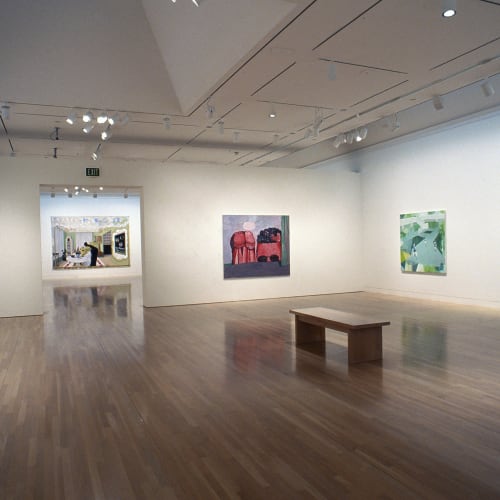Edgar Bryan’s self-portrait as a (young) painter, The Ledge (2004), seems almost to have come directly from a children’s book. His concentration on his painting makes him almost one with the plant that he represents, even as it slowly envelops him. The overt romanticism of the image might be difficult without this appeal to a genre outside conventional art criticism. Illustration for children is one of those left-over areas of pictorial representation that have retained a certain independence of both art history and the dominance of photography. Although Bryan only recently began to look at children’s book illustration specifically, he served as an illustrator in the United States Air Force for five years before studying at the Art Institute of Chicago and UCLA. As he recalled: “I painted murals of proud airmen and women, and I designed logos for the Air Force in Europe. I also did illustrations of the Berlin Wall coming down, since I arrived in Europe soon after it fell. I drew airplanes quite a bit too, especially the B-2 Stealth Bomber.” Yet at the same time, he made another connection, to the clarity of the Neue Sachlichkeit artists of the 1920s, Karl Hubbuch and Rudolf Dischinger in particular. As Bryan explained,
It’s interesting to me that “objectivity” and photo-realism are so different. These artists were taught academic drawing obsessively. I think their drawings look like children’s book illustrations, I guess because they are trying to tell a story about life experiences, emotions and attitudes, etc. Simple drawings of faces and hands are the way to express these things. So this is a bridge from illustrations to the cold precision of the New Objectivity.
In his huge painting of a posturing mime, Bryan found an image that tests the sensibilities of even the most blasé audiences. Its portentous title, Night in the Alte Pinakothek (2002), only ups the ante on what for many viewers seems a deliberate plunge into bad taste. “I did not fully appreciate the inexplicable level of disgust many people have for the mime,” Bryan has acknowledged. For him, though, even this subject must be approached with sincerity. “Although it is rewarding to occasionally provoke disgust, it is more important that I take the subject seriously and approach the mimes from their own point of view.” This willed sincerity echoes the repeated struggles of contemporary painters to put aside their crises of faith in the very validity of their medium. The white painted face of the mime recalls Richter’s painting out of the child’s face, and the upraised hands seem to plead for mercy, as the space of the painting shoots back vertiginously. This is representation under pressure.
